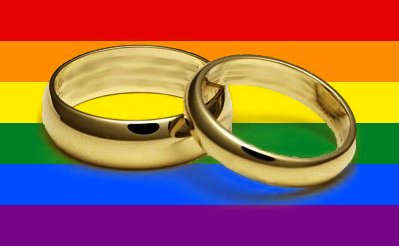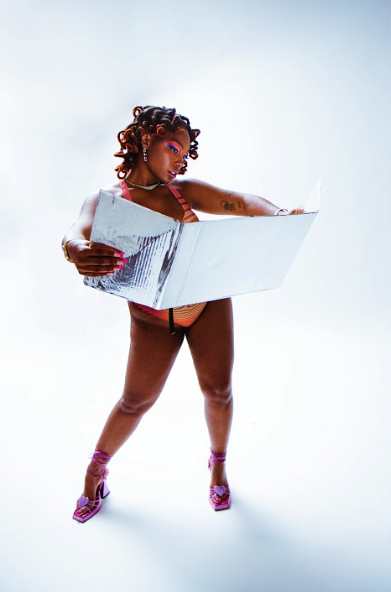History of Homoerotic Cowboy Imagery

Addison Herron-Wheeler is OUT FRONT's co-publisher and editor-in-chief and friend…
What exactly is it that makes the concept of cowboys so tantalizing? Why are they now an icon for gay men? Where exactly did queerness and cowboys converge?
These are questions I started asking myself recently when I was tasked with tracking down gay rodeo cowboys for interview. As a longtime punk fan, I was familiar with the iconic T-shirt from Vivian Westwood’s shop, SEX, featuring two cowboys with genitalia almost touching. And of course, I know the film Brokeback Mountain.
Living here in Denver, with the culture of the Western-themed gay bar Charlie’s, the Colorado Gay Rodeo, a historic gay culture, and rich Western culture, it is clear that the trope of the gay cowboy is still alive and well. But where did it all come from, and why have we chosen this particular symbol to embody masculine queerness?
According to GLBTQ Archive, social historians believe that male-on-male relationships were pretty common in work communities, which also explains the allure of the strapping pair of male sailors or the reason bear culture fetishizes the lumberjack look. While there isn’t direct evidence of sexual behavior, photographs and memoirs do tell us that men in these communities slept together at night, groomed each other, ate together, and bathed together. They even held stag dances where men took other men as their dates.
Cowboys in Westerns are often depicted as loners and heroes, too cool and aloof to settle down with a woman. Any significant relationships they do have are with other men; they often become extremely close to their sidekicks or partners, leading to a Batman-Robin bond between two swaggering dudes.
Some Westerns even have overt homosexual themes. GLBTQ Archive lists many films, books, and TV shows with either implications of or straight-up male attraction; clearly these instances aren’t one-offs. In the world of Spaghetti Westerns, American West movies created by Italian directors, homoeroticism was in no short supply. Often, the filmmakers were gay or were influenced by the underground movement of gay men in Italy, and shirtless, oily men; tales of male bonding; and covert sexuality were the themes of many Italian Western films.
All of this latent sexuality is, of course, indicative of the fact that the male-on-male encounters common in cowboy culture were doing a lot more than just satiating lonely men stranded miles away from women. They were awakening in them a latent desire, whether they were attracted to men only or realized they had an affinity for both genders. And this carried over into contemporary culture. It seemed that many closeted men could relate to the cowboys.
In 2006, the short story by Annie Proulx, Brokeback Mountain, was turned into a major blockbuster film, featuring the now-deceased Heath Ledger. His relationship in the movie with Jake Gyllenhaal is intense, secret, and full of passion. The fact that the two are allowed to explore their love on their camping trips together for work, but then aren’t allowed to share that love in the real world, is especially heartbreaking. The film examines the idea that while the trope of two male cowboys getting it on may be hot, two men denying their love for each other because of circumstance and prejudice is a tragedy.
Since its infusion into pop culture, the concept of gay cowboys has made its way into all kinds of unlikely places, including punk rock. Vivian Westwood’s famous 1970s store, SEX, was a place that influenced the fashion behind the music. One of her most famous T-shirt designs features two naked-from-the-waste-down cowboys with genitalia almost touching. The shirt caused a lot of controversy and became one of the iconic designs of the punk movement. Mick Farren used a pair of cowboys with a strong male bond and a propensity for sex and drugs, one of whom is bisexual in the story, as the heroes of his epic, punk-influenced sci-fi series DNA Cowboys. The acceptance of gay cowboys in counterculture seems to be a middle finger to the system, infusing homosexuality and non-status-quo behavior into an area that was originally seen as more traditional.
Today, gay cowboys are a happy symbol of sexuality and living as one’s truest self. The men of Charlie’s and the Rocky Mountain Regional Rodeo are proof that this is an important part of Western life. Whether it is the silly sexuality of strippers in cowboy hats or serious rodeo competitors being able to openly declare their queerness while simultaneously taking home accolades and working on ranches, queer cowboys and cowgirls are welcome in Denver and an important part of Western life.
What's Your Reaction?
Addison Herron-Wheeler is OUT FRONT's co-publisher and editor-in-chief and friend to dogs everywhere. She enjoys long walks in the darkness away from any sources of sunlight, rainy days, and painfully dry comedy. She also covers cannabis and heavy metal, and is author of Wicked Woman: Women in Metal from the 1960s to Now and Respirator, a short story collection.










